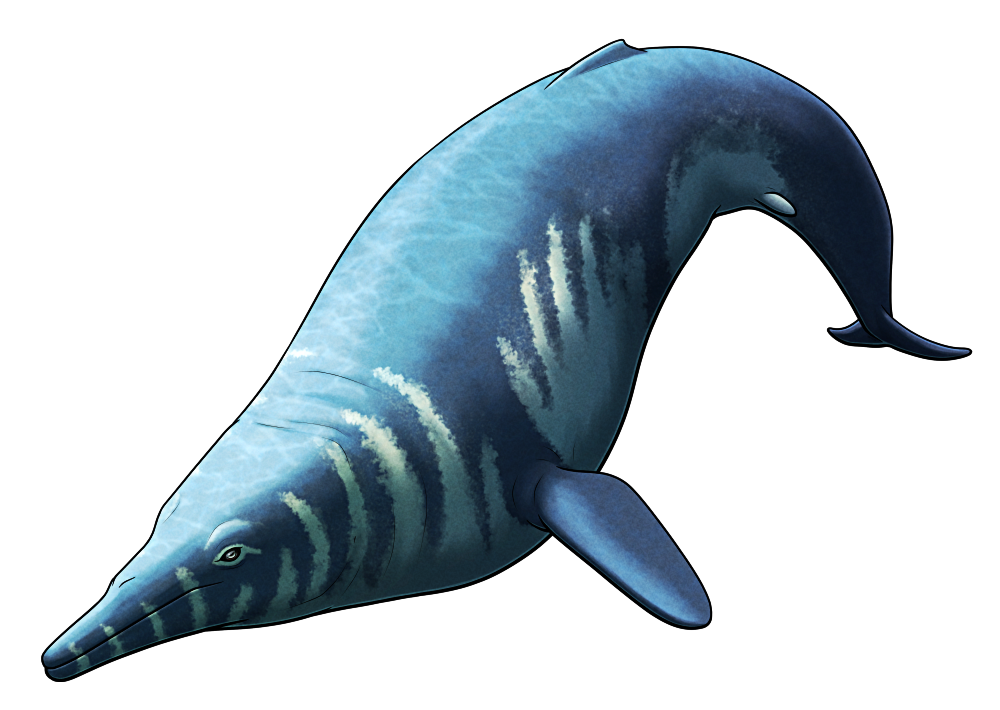Tutcetus rayanensis was a whale that lived in warm shallow tropical seas covering what is now Egypt during the Eocene, about 41 million years ago.
It was an early member of the “basilosaurids“, a grouping made up of multiple early cetacean lineages (an “evolutionary grade“) representing some of the first fully aquatic forms. Like other members of this group it probably would have had a rather long and slender body shape – but unlike most of its relatives Tutcetus was comparatively tiny, estimated to only have been around 2.5m long (~8’2″).
The fusion of the skull bones in the one known fossil specimen indicate it was almost fully grown at the time of its death, and the pattern of tooth replacement suggests this small basilosaurid species matured very rapidly – a sort of “live fast, die young” life strategy.
Tutcetus’ small size and early demise also inspired its genus name, with “Tut” referencing the teenage Egyptian Pharaoh Tutankhamun.

